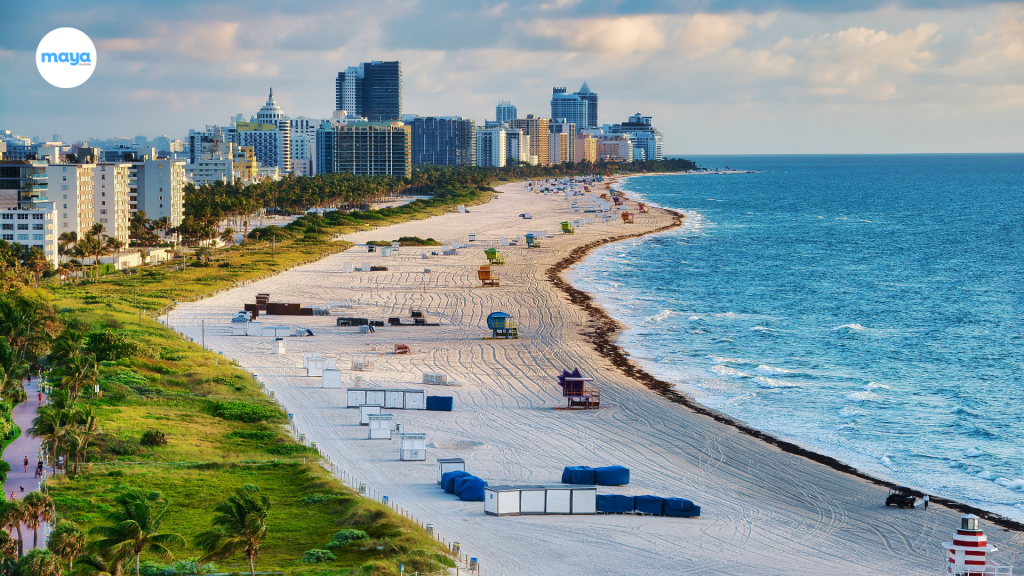Florence grabs you the moment you arrive. Not with noise or flash, but with a quiet beauty surrounding you. It’s in the curve of a centuries-old bridge, the scent of fresh espresso drifting through narrow streets, and the golden light that rests on faded stone at sunset.
One moment, you are standing beneath the Duomo, looking up in awe. Next, you are tucked into a local trattoria, savoring a plate of pasta that tastes like it was made just for you.
Every visit to Florence leaves a mark. It could be a quiet street that caught you off guard or a simple meal that stuck with you. This guide isn’t about ticking off sights; it’s about experiencing one of Italy’s most iconic cities in a way that feels real. Florence doesn’t rush you. It invites you to slow down, look closer, and let the small moments stay with you.
Let’s explore the culture, cuisine, and quiet charm that make Florence unforgettable!
Must-See Historical and Architectural Marvels
Before we get into the food and lesser-known corners of the city, let’s start with the basics. Florence is full of history, culture, and places that make you stop and look. Just walking around feels like stepping into the past.
Duomo
If there is one thing you have to do in Florence, it’s climb the Duomo (Cathedral). Yeah, it’s a workout, lots of stairs and narrow passages, but the view at the top is seriously worth it. You will get a full view of the city, the hills, and those red rooftops that feel straight out of a painting.
My tip? Go early or book your spot in advance. It fills up fast, and the morning light is something else.
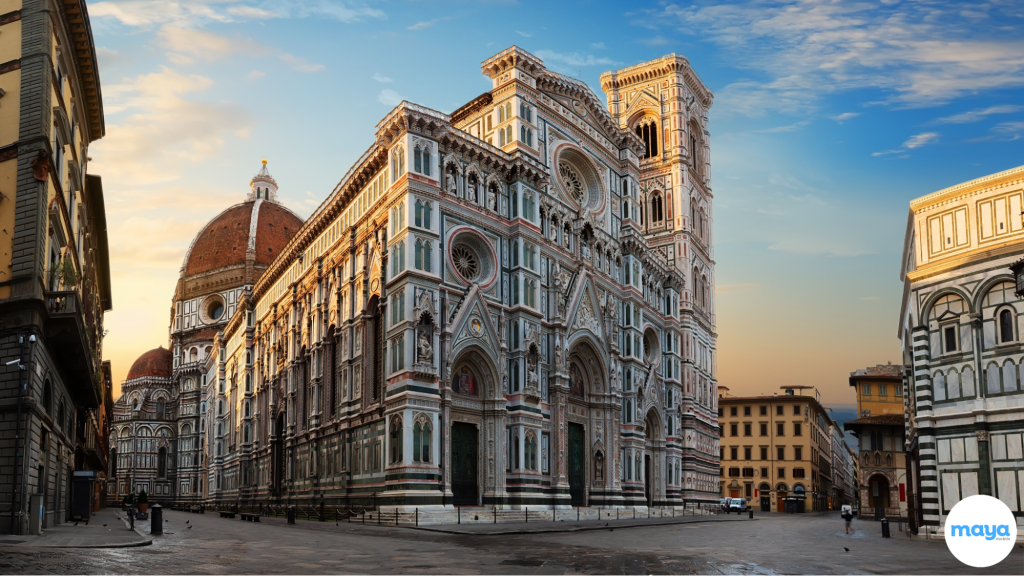

Ponte Vecchio
Take a slow walk across the Ponte Vecchio, even if it’s packed. This bridge has been here for centuries, and it still has little shops selling gold and handmade jewelry.
But what I love most is the vibe, street music, soft river views, and that feeling like you are stepping into the past. Stop for a moment, enjoy the view, and just take it all in.
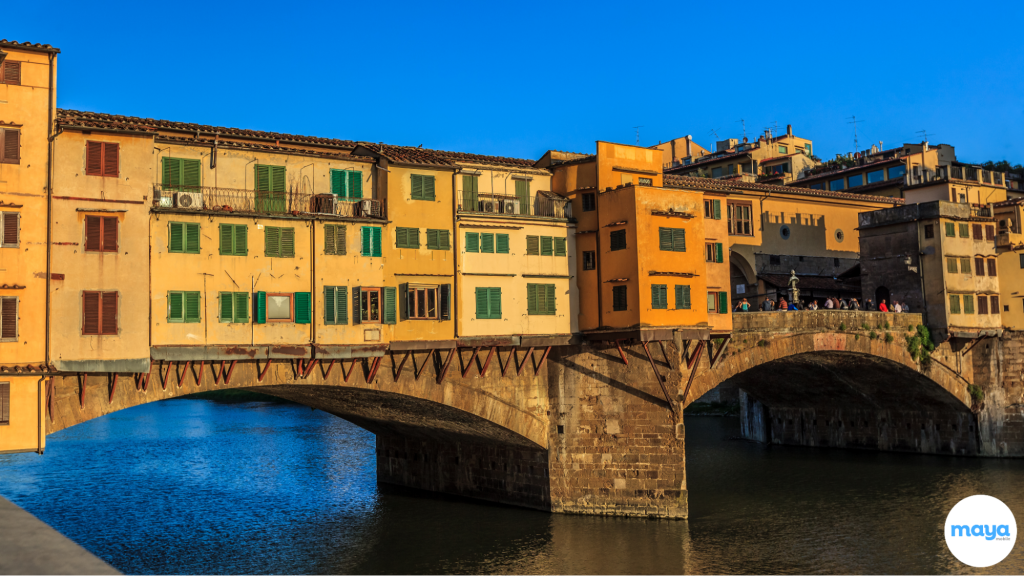

Palazzo Vecchio
This is it if you want a place that tells Florence’s story all in one go. Palazzo Vecchio looks like an old fortress, and it kind of is. It was the center of power back in the day, especially when the Medici family was running things.
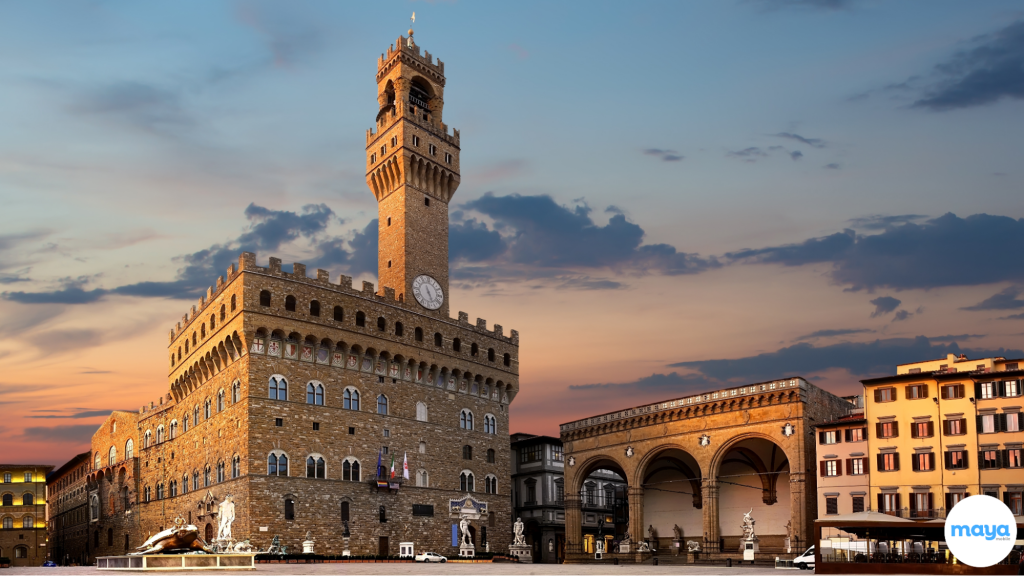

Inside, it’s a mix of grand rooms, secret staircases, and ceilings packed with artwork. I recommend taking a guided tour or audio guide; it makes the history way easier to follow and more fun, too.
Also Read: How to Become a Digital Nomad and Work Remotely
Explore Florence’s World-Class Art Scenes
Once you have taken in the city from the outside, it’s time to step indoors because Florence’s real treasures are hanging on walls and standing in quiet galleries. If you are into art, even just a little, this part will blow you away.
The Uffizi Gallery
The Uffizi Gallery is Florence’s most iconic museum and a must-visit for any art lover. Housing masterpieces by Botticelli, Caravaggio, Leonardo da Vinci, and Michelangelo, its collection defines the Italian Renaissance. Highlights include The Birth of Venus and Primavera, which captivate far more in person than any reproduction can.
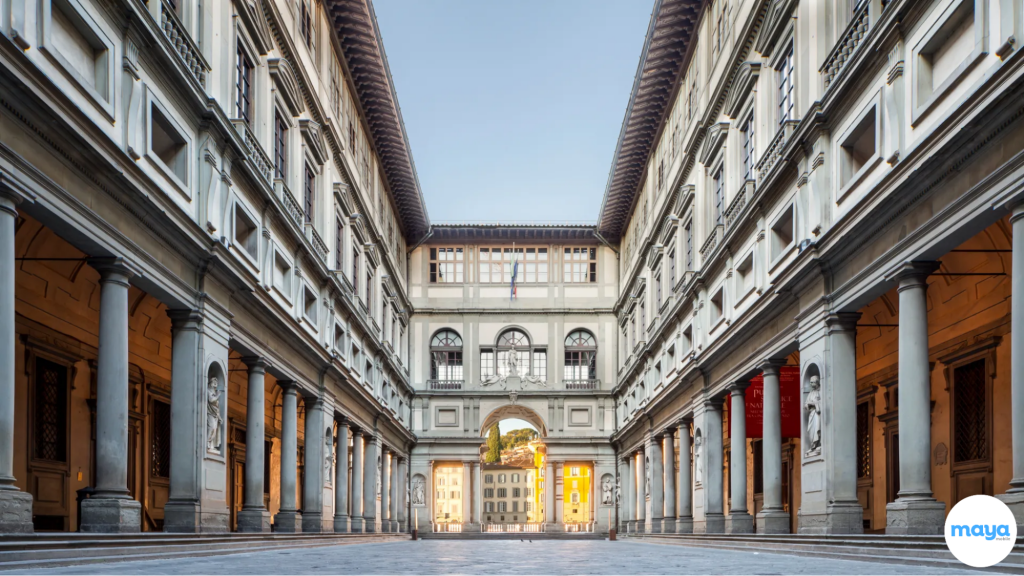

Each room offers a journey through centuries of artistic brilliance, making the Uffizi not just a museum but an unforgettable cultural and historical experience in the heart of Florence.
David in Marble
You’ve seen the photos, but nothing compares to standing in front of Michelangelo’s David in person. It’s over 17 feet tall, carved from a single block of marble, and full of detail that’s easy to miss until you’re right there in the room. The way he stands, calm, focused, and ready, makes it feel like he could move at any moment.
Michelangelo sculpted David in the early 1500s when he was just in his twenties. It was meant to stand outside as a symbol of strength and independence for the city of Florence. Now, it’s inside the Accademia Gallery, protected and perfectly lit.
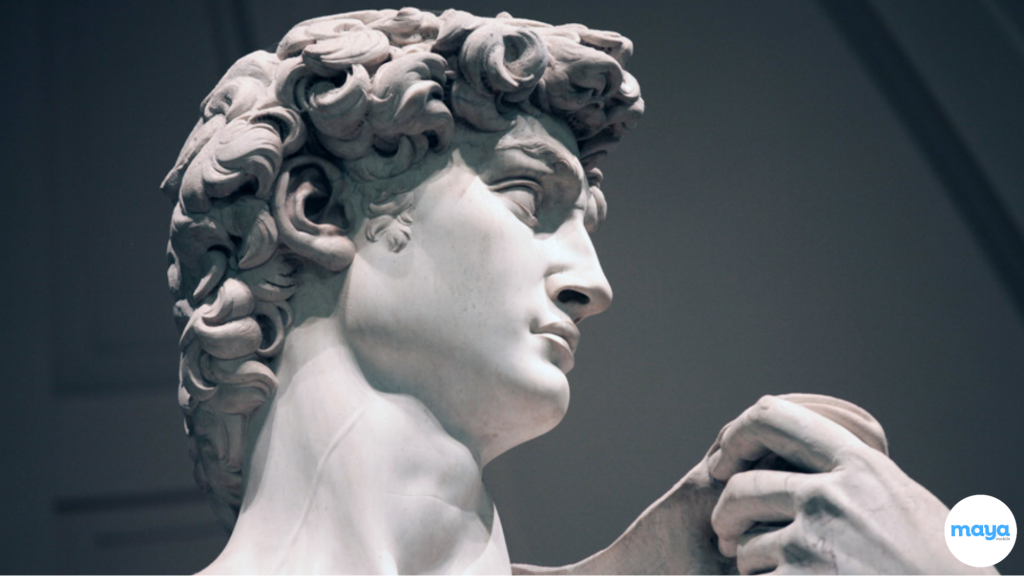

The museum isn’t huge, and David is the star. You’ll also see some of Michelangelo’s unfinished pieces, which show how he believed he was “freeing” figures from the stone. It’s one of those experiences that sticks with you.
Smaller Museums with Big Stories
When you need a break from the bigger crowds but still want something meaningful, Florence’s smaller museums are full of character and, often, way more relaxed.
Museo Galileo
The Museo Galileo offers a fascinating glimpse into the scientific revolution and Florence’s role in it. Home to original instruments used by Galileo Galilei, including his telescopes and experimental tools, the museum showcases how early scientists explored the universe. Exhibits of antique globes, astrolabes, and timepieces are both visually striking and historically rich.
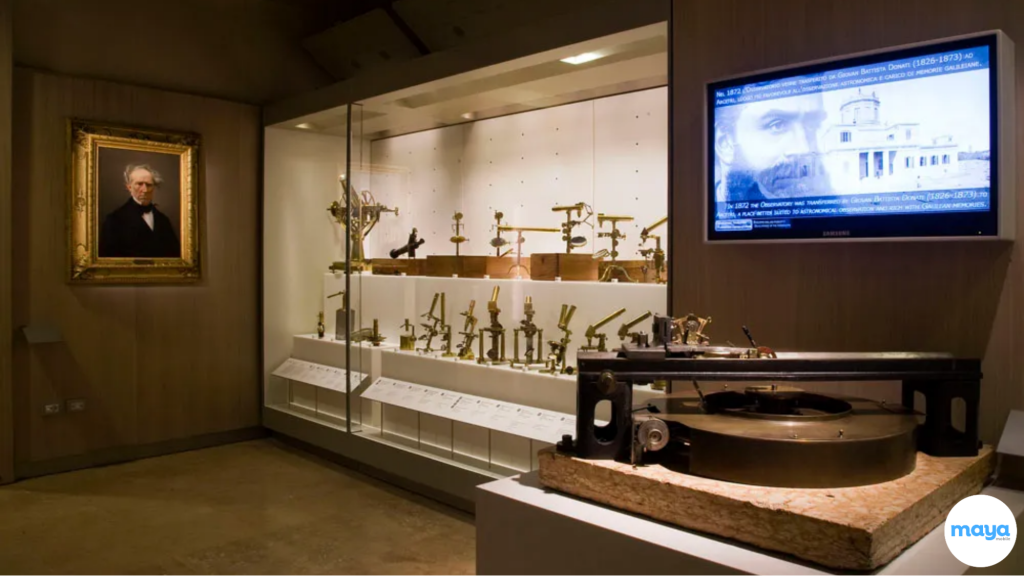

Even if you’re not a science enthusiast, the well-curated displays make it engaging and accessible, revealing a side of Florence focused on discovery, intellect, and innovation.
Palazzo Pitti
Once home to the powerful Medici family, this palace feels like walking through someone’s royal home. Each room is full of art, furniture, and decoration from centuries past, and it still has that lived-in feel.
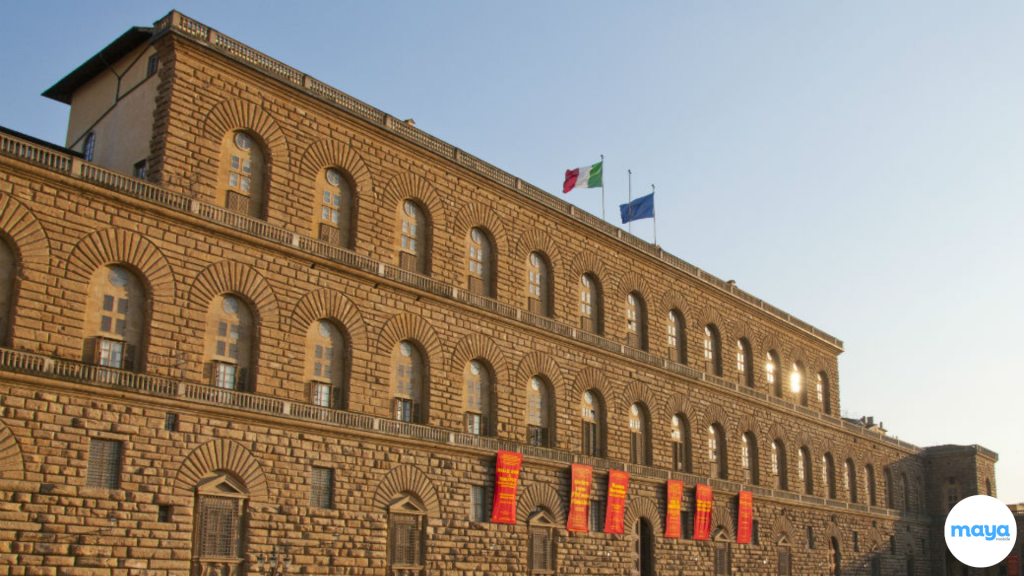

You’ll find fewer crowds here compared to the Uffizi, and you can take your time wandering through grand halls and quiet corners. The Boboli Gardens are right behind it, too, and are great for a peaceful stroll afterward.
Museo degli Innocenti
This museum tells the story of Florence’s first orphanage, dating back to the 1400s. It’s not flashy, but it’s deeply moving. You’ll see personal objects, letters, and artwork connected to the children who once lived there.
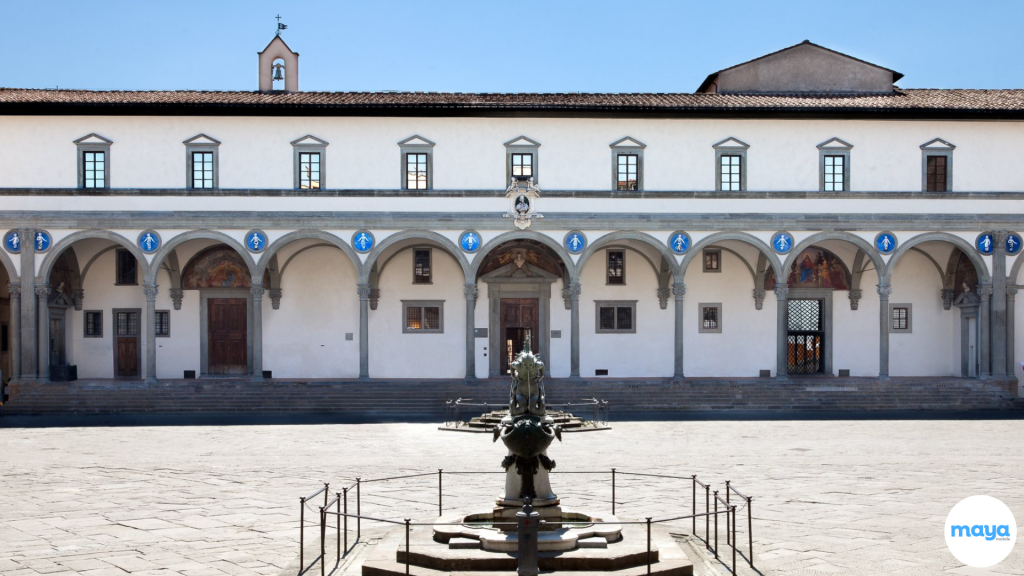

It’s a powerful look at how the city cared for its people, and the architecture, designed by Brunelleschi, is a key part of Florence’s history too.
Museo di San Marco
Tucked inside a former monastery, this museum is peaceful and packed with spiritual beauty. Each monk’s cell is painted with a fresco by Fra Angelico, and walking through the quiet hallways feels almost meditative.
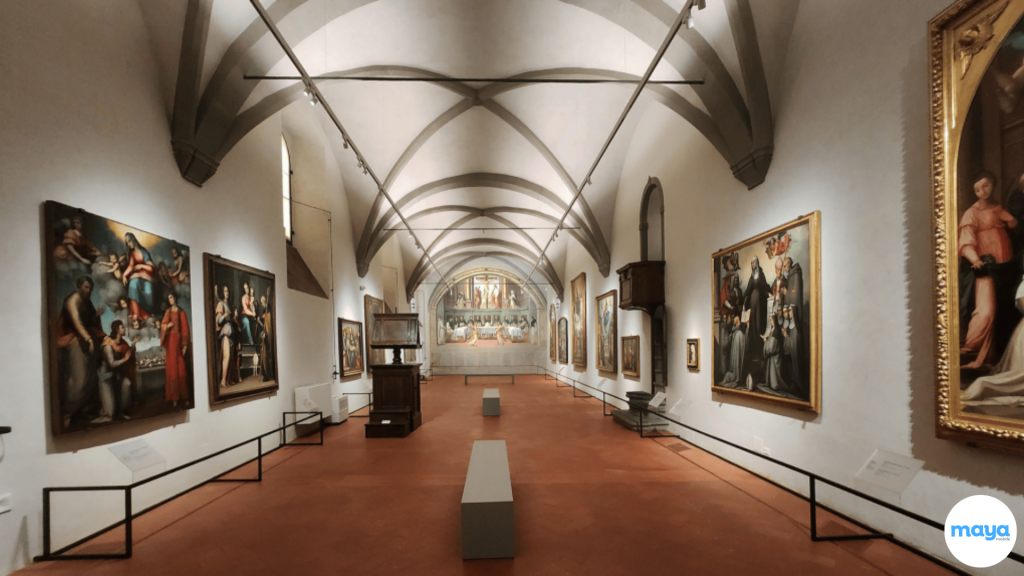

It’s a very different kind of art experience, simple, thoughtful, and often completely overlooked.
These quiet spots may not shout for your attention, but they speak to the heart of Florence. When you’re ready, let’s step back outside and see what the city has cooking.
Authentic Food Experiences You Can’t Miss
After all that walking and art, you’re going to be hungry, and in Florence, that’s a very good thing. This city knows how to feed you right, and the food is just as memorable as the sights.
Bistecca alla Fiorentina
Let’s talk about the famous bistecca alla fiorentina. It’s a huge T-bone, usually served rare, and perfect for sharing. If you’re into bold flavors and hearty meals, this is a must-try.
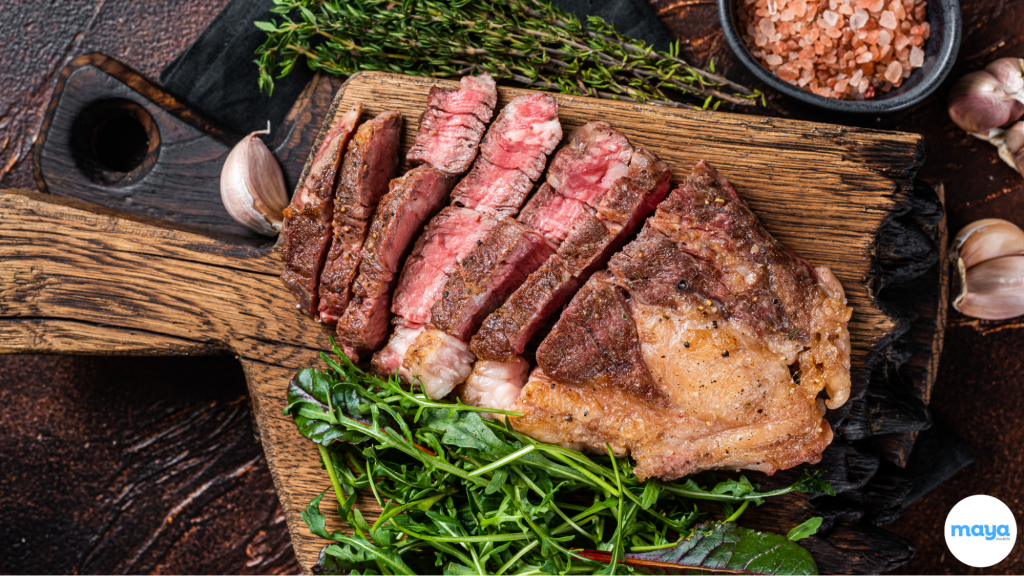

Just make sure you go hungry. But don’t stop there; Florence has plenty of other local dishes worth trying, like ribollita, a thick vegetable and bread soup packed with fiber, vitamins, and plant-based goodness. Or go for pappardelle al cinghiale, a pasta dish made with wild boar that’s rich in lean protein and iron.
These meals are more than just comforting. They’re made from fresh, whole ingredients that give your body real fuel while still tasting amazing.
Ribollita (Tuscan Bread and Vegetable Soup)
Then there’s ribollita, a dish that came from humble beginnings but still holds its own. It’s a thick, rustic soup made from bread, beans, kale, and vegetables. The name means “reboiled” because it was traditionally made from leftovers.
But don’t let that fool you. When it’s done right, it’s rich, filling, and tastes like something your Italian grandmother would make (if you had one). It’s also packed with fiber, plant-based protein, and vitamins from all the greens and veggies, making it one of the healthiest comfort foods you can find in Florence.
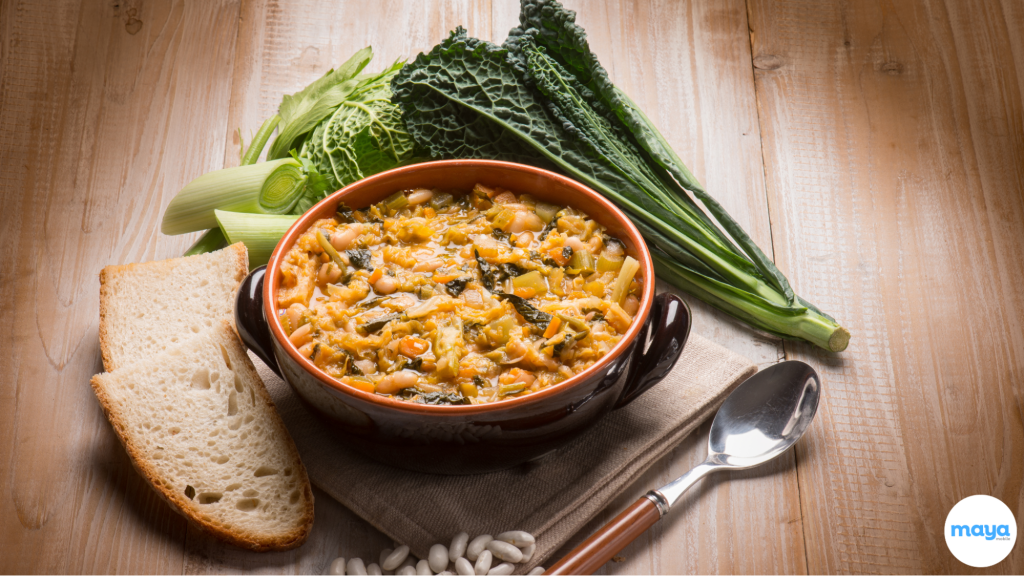

Pappardelle al Cinghiale
Looking for pasta? Go straight for pappardelle al cinghiale. Picture wide ribbons of fresh pasta coated in a wild boar ragu that’s been simmering for hours. The sauce is earthy, meaty, and full of Tuscan flavor with hints of red wine and herbs.
It’s a dish that tastes like it’s been passed down for generations, and it probably has. Wild boar is leaner than regular pork and rich in protein, iron, and essential minerals, making this hearty meal surprisingly nutritious as well as deeply satisfying.
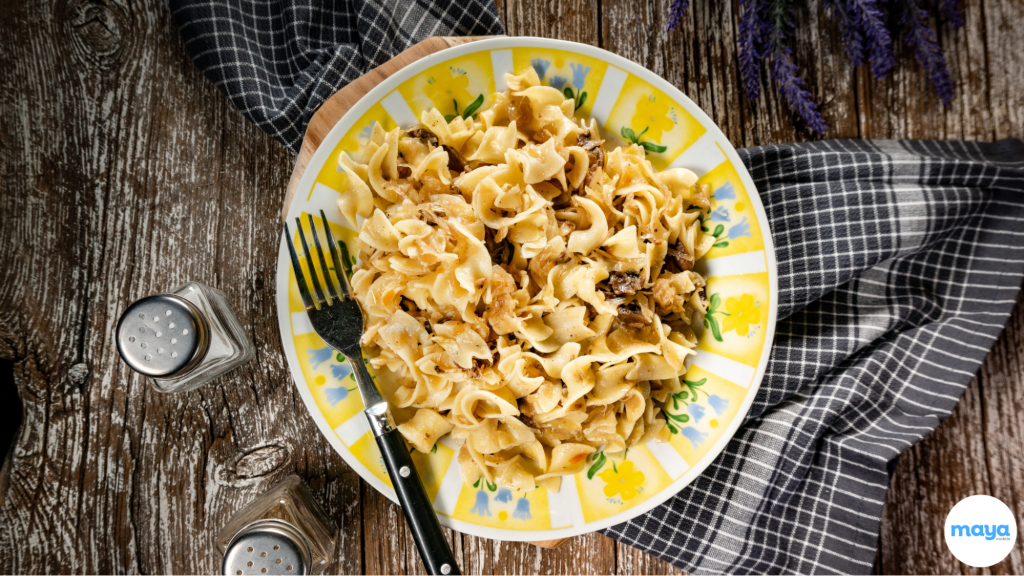

Cantucci e Vin Santo (Almond Cookies with Dessert Wine)
And, of course, you’ve got to end on a sweet note. Try cantucci and Vin Santo. Cantucci is small, crunchy almond cookies, and you dip them into Vin Santo, a golden, sweet dessert wine. It’s the kind of slow, simple finish that rounds out a good meal perfectly.
Almonds bring a dose of healthy fats, fiber, and vitamin E, so even your dessert has a little something good in it. Just the right balance of indulgence and tradition.
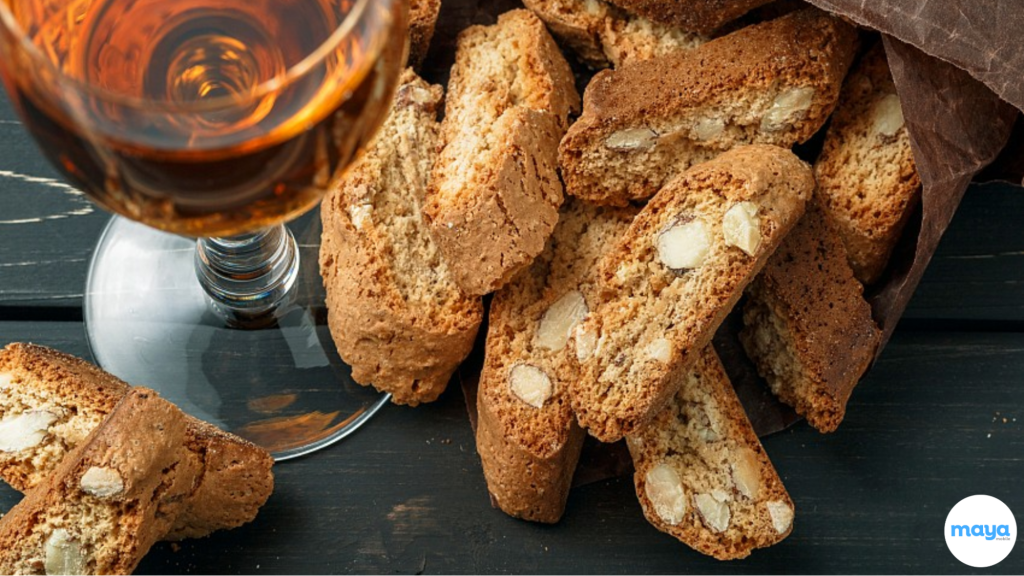

Crespelle alla Fiorentina
Think of it as the Florentine version of a savory crepe. Crespelle are thin pancakes filled with ricotta cheese and spinach, then topped with béchamel and tomato sauce before being baked until bubbling and golden. It’s rich, creamy, and comforting, like lasagna’s elegant cousin.
You’ll usually find it as a first course (primo), especially in traditional trattorias. A great choice when you want something hearty but not meat-heavy. Plus, the spinach and ricotta combo brings calcium, iron, and protein to the table, making it as nourishing as it is satisfying.
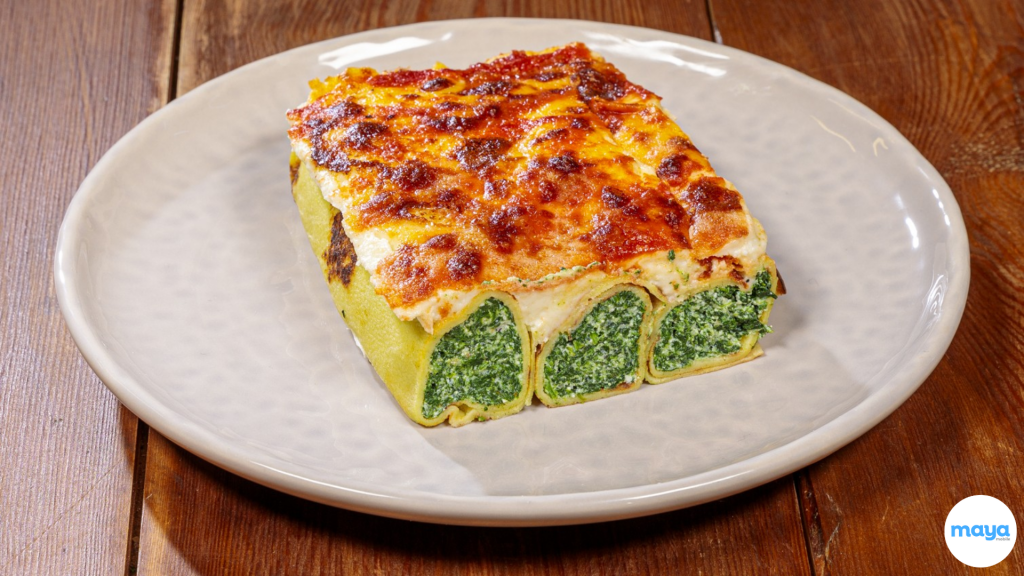

Panzanella
This one’s for the warmer months. Panzanella is a refreshing bread salad made with chunks of soaked stale bread, tomatoes, cucumbers, red onions, olive oil, and vinegar. It’s simple, fresh, and full of flavor, proof that Tuscan cooking can make something amazing out of almost nothing.
Perfect as a light starter or side dish on hot days when you want to keep things cool and casual. And thanks to all the raw veggies and olive oil, it’s packed with antioxidants, fiber, and healthy fats, clean, honest food that feels as good as it tastes.
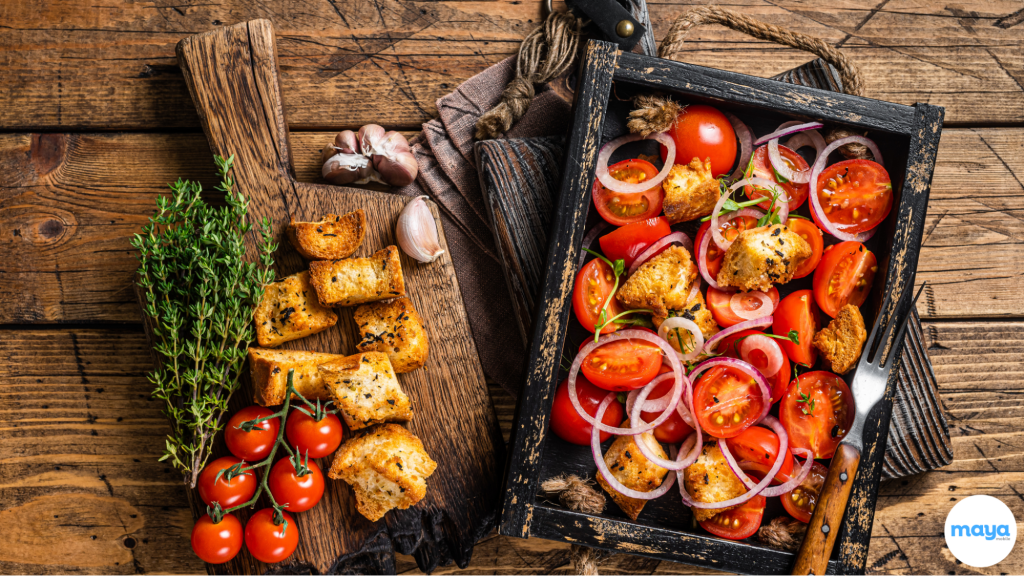

Tasting these dishes at a local spot is always a win, but if you want something quick and easy, there’s a great way to try a bit of everything in one place. Want to sample a variety of local foods without committing to a long sit-down meal? Mercato Centrale is the place to go.
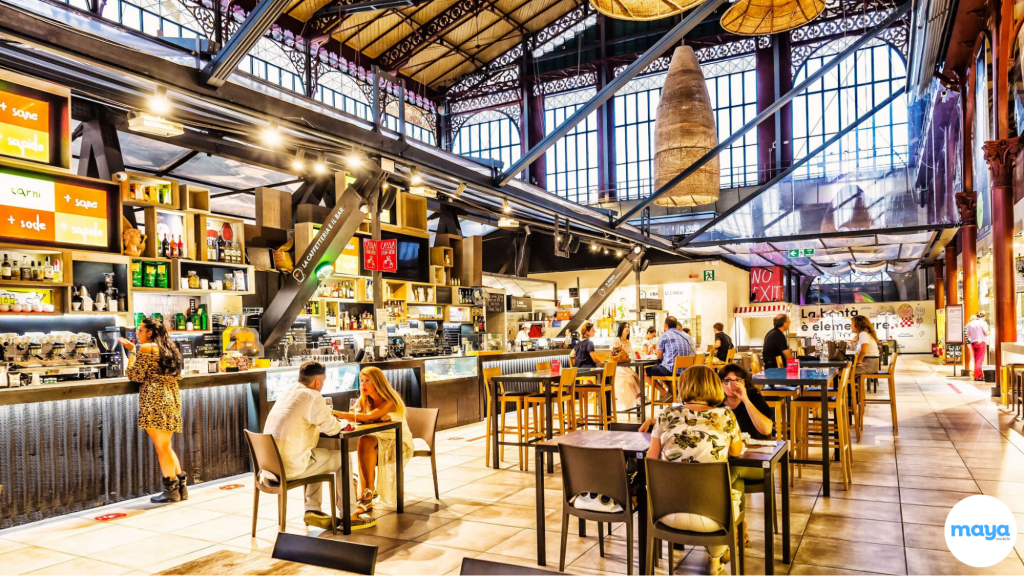

It’s a busy indoor market filled with different food stalls offering fresh pasta, pizza, cheese, gelato, and more, all in one spot. It’s perfect for a quick lunch or a casual bite while you’re out exploring.
Wine, Aperitivo, and the Florentine Café Culture
Once you’ve eaten well (and you will), it’s time to slow things down even more. In Florence, sipping is just as important as eating, whether it’s wine, coffee, or something in between.
Aperitivo Hour
One of the favorite things about evenings in Florence is aperitivo. It’s kind of like happy hour, but better. You order a drink, maybe an Aperol Spritz, a glass of Chianti, or whatever you’re in the mood for, and it usually comes with free snacks.


We’re talking chips, olives, little sandwiches, or even mini pasta plates, depending on the place. It’s a super chill way to wind down after a day of walking. Go around 6 to 8 PM, grab a spot outside if the weather’s nice, and just enjoy the moment.
Tasting Chianti
You don’t have to head out into the countryside to taste Chianti wine. Lots of cozy wine bars in Florence serve amazing local options. That said, if you have time, taking a half-day trip to the Chianti region is worth it.
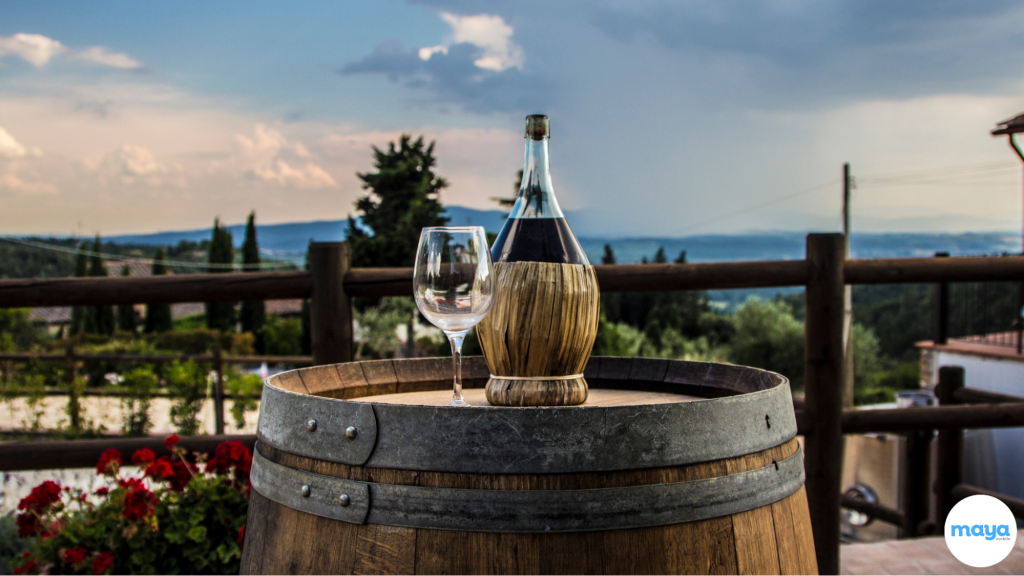

Picture rolling hills, small vineyards, and generous tastings. But even if you stay in town, ask for local wines when you’re out to eat. The wine they serve at most places tastes great and doesn’t cost much.
See What Most Visitors Miss in Florence
Once you’ve seen the big sights and had your fill of pasta and wine, it’s time to slow down and wander a little. That’s when you start to find the parts of Florence that most people miss, and honestly, those might end up being your favorite moments.
The Rose Garden (Giardino delle Rose)
Looking for a quiet spot with a great view? The Rose Garden is a hidden place just below Piazzale Michelangelo, but without the crowds. It’s peaceful, full of greenery, and offers one of the best views of Florence. In fact, it might be even better than the piazza above because you’ll likely have it all to yourself.
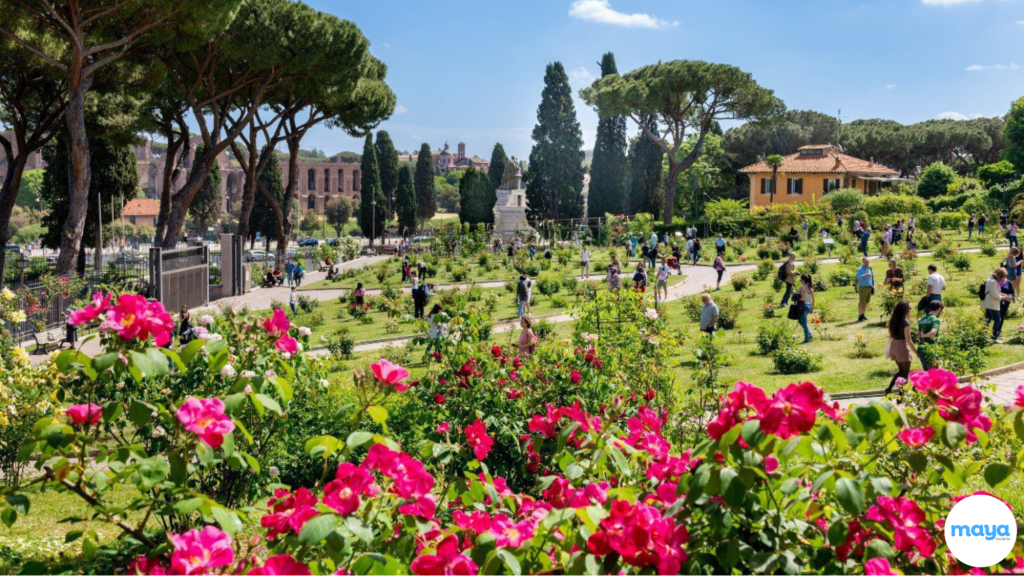

There is a mix of flowers, sculptures, and benches where you can just sit and breathe for a bit. Bring a snack, grab a seat, and enjoy the view.
Artisan Workshops in Oltrarno
Cross the river into Oltrarno, and you will see a different side of Florence. This neighborhood feels more local, and it’s full of small shops where people are still making things by hand, such as leather bags, jewelry, paper goods, you name it.
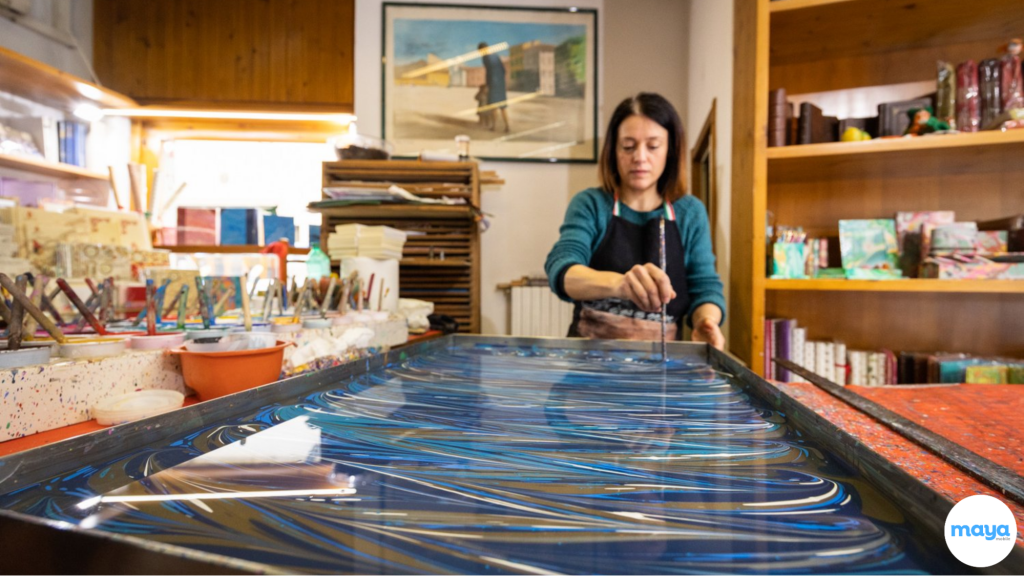

Many of these artists have been at it for generations. Stop in, watch them work, and maybe pick up something special that wasn’t made in a factory. It’s one of the best ways to support locals and take home something meaningful.
Secret Chapels, Streets, and Lesser-Known Piazzas
Some of the most unforgettable places in Florence aren’t the famous sights; they’re the quiet corners that feel real, local, and a little bit magical.
Chapels
Chiesa di Santa Margherita dei Cerchi is a tiny, dimly lit church linked to Dante and Beatrice. It’s easy to miss, but people still leave love notes near her shrine. Another one is the Cappella dei Pazzi in the Santa Croce complex. It’s peaceful, beautifully designed by Brunelleschi, and often calm even when the main basilica is full.
Streets
Via Toscanella in the Oltrarno is a short, quiet street lined with artisan shops and ivy-covered walls. It feels like a step back in time. Via dei Neri is more lively but still local, known for street food and the smell of fresh schiacciata bread in the air.
Piazzas
Piazza della Passera is a small square in the Oltrarno with local cafés and a slower pace; it feels like a neighborhood hangout. Piazza Santo Spirito, just a bit further, has a relaxed vibe, especially in the morning when locals gather for coffee or the weekend market.
Wandering into these lesser-known spots gives you a deeper, quieter connection to the city, like seeing the real side of Florence most tourists miss.
Discover Florence by Walking: A Guide to the Top Sights
Florence is one of those cities that’s best enjoyed at a slower pace. But knowing how to get around can make your trip a whole lot easier and more fun.
Here’s how to move through the city like you’ve lived there for years.
Your Perfect 1–2 Day Walking Plan for Florence
Florence is super walkable, so don’t stress about transportation. You can cover a lot just on foot. If you only have a day or two, plan a simple walking route that mixes the big landmarks like the Duomo, Uffizi, and Ponte Vecchio with a few chill spots for coffee or gelato along the way.
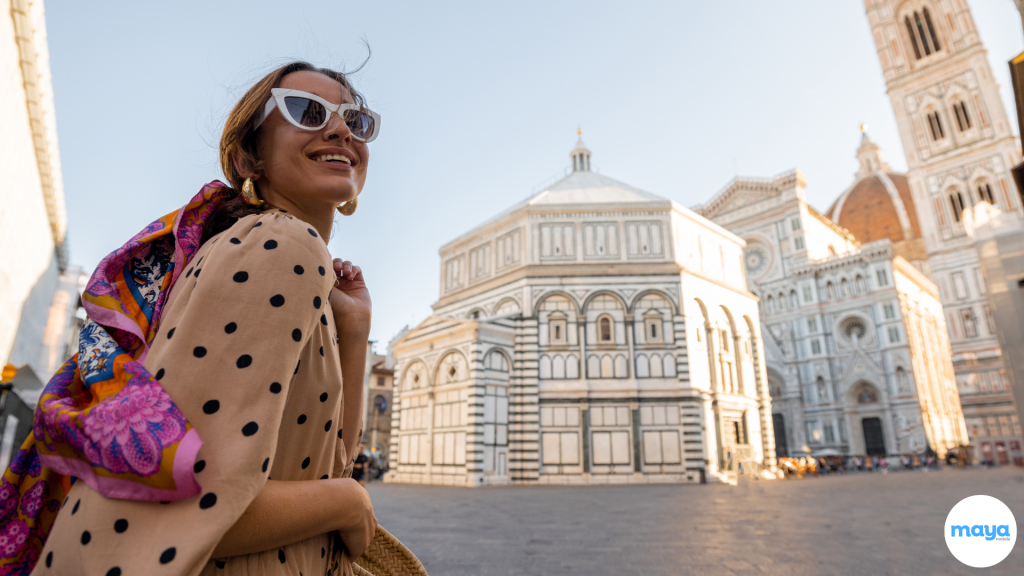

Don’t try to cram everything in. Give yourself time to stop, take photos, and wander into places you didn’t plan; that’s usually where the best things happen.
Bike Rentals, Guided Tours, and Self-Navigation Apps
Not into walking everywhere? Rent a bike or join a guided tour; it’s an easy way to see more of the city without feeling rushed. Tours often come with fun local stories you won’t find in a guidebook.
Want to do your own thing? Just download a self-guided tour app and explore at your own pace while still learning what you’re looking at.
Day Trips Worth Taking
Florence is packed with things to do, but a short trip just outside the city can add something special to your visit. Fiesole, only minutes away, offers quiet streets, fresh air, and panoramic views.
Head a little further, and you’ll hit the Chianti region, known for its scenic hills and local wine. Both spots make for an easy half-day escape, and you’ll be back in Florence before the sun sets.
4 Tips to Plan Your Ideal Florence Trip
Before you pack your bags or hit “book now,” there are a few simple tips that can help make your Florence trip even better. These little things might not seem huge, but they can save you time, money, and a lot of stress.
1. Best Times to Visit Florence by Season
Spring (April to June) and fall (September to October) are the best times to visit Florence. The weather is comfortable, the city feels alive but not packed, and everything just flows better.
Summer tends to be hot and crowded, while winter is calm but a little cold and grey. For the best mix of good weather, smaller crowds, and that classic Florence energy, spring and fall are ideal.
2. What to Book in Advance (and What Not To)
Some spots in Florence are so popular that they book out fast. Book tickets ahead for big places like the Uffizi Gallery, Accademia (to see David), and climbing the Duomo. You will skip the long lines and save time.
But don’t worry about smaller churches, markets, or local museums; you can usually just walk in. Keeping part of your trip open gives you the freedom to explore without a tight schedule.
3. Cultural Etiquette and Safety Tips
Florence is friendly and easy to navigate, but a little preparation helps. Learn a few basic Italian words like ciao (hi), grazie (thank you), and per favore (please). Locals appreciate the effort. Dress comfortably, especially shoes, since you will be walking a lot, but avoid super flashy or beachy outfits when visiting churches.
And like any city, just keep an eye on your stuff in busy areas. Pickpocketing can happen, particularly around train stations or major sights, so stay alert without stressing out.
4. Staying Connected: eSIM Makes Travel Easier
Want to avoid hunting for local SIM cards or dealing with roaming charges? An eSIM is the easiest way to stay connected in Italy. You can download one before you even land, and it activates as soon as you arrive.
It’s perfect for using maps and translation apps, checking opening hours, or booking last-minute tickets on the go. Most newer phones support eSIMs, and it’s usually cheaper than buying a physical SIM at the airport or a shop.
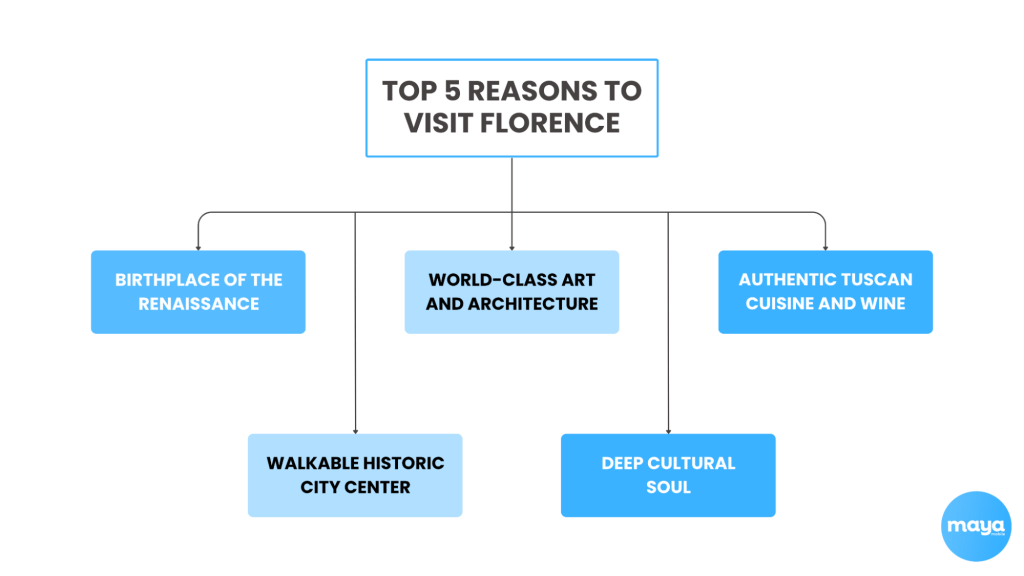

Let Florence In, and Let Maya Mobile Keep You Connected
And now, it’s your moment. Whether you’re already there or just about to step into the heart of Florence, take it all in. Not just the sights, but the feeling of the place. Let yourself get lost in the rhythm, pause when something moves you, and don’t rush the little things. The real beauty of Florence isn’t just in what you see; it’s in what you feel while you’re there.
Stay connected as you go, without the inconvenience of local SIM cards or roaming charges. With a travel-friendly eSIM for Italy from Maya Mobile, you can download it before you arrive and activate it when you land, easily, quickly, and reliably. Perfect for checking maps, booking tickets, or just sharing the view with someone back home.
So, go easy, stay curious, and let the city leave its mark on you. Because the best part of Florence isn’t the story you’ll tell; it’s how it makes you feel while you’re living it.
Related Reads
FAQs on Things to Do in Florence
1. What not to miss in Florence, Italy?
In a city known for its art, architecture, and Tuscan flavors, Vespa tours and wine tastings are a must. Prefer self-guided? Don’t miss Piazzale Michelangelo and Pitti Palace.
2. What is the number one thing to see in Florence?
Any trip to Florence must include a visit to the Uffizi Gallery, one of the oldest and most famous art museums in the Western world. It contains paintings that belong to the XVI-XIX centuries and some Italian Renaissance masterpieces by artists such as Botticelli, Michelangelo, and Leonardo da Vinci.
3. Is 2 days enough to visit Florence?
With 2 days in Florence, you have just enough time to visit the highlights of this beautiful city. Tour the Uffizi Gallery, climb the dome of the Duomo, see Michelangelo’s David, stroll across the Ponte Vecchio, and watch the sunset from rooftop bars or stunning viewpoints of the city.
4. What is Florence best known for?
Florence is renowned for its role as the cradle of the Renaissance, a period of artistic, intellectual, and cultural flourishing. It’s also famous for its stunning Renaissance architecture, iconic landmarks like the Duomo (Cathedral of Santa Maria del Fiore), and the Uffizi Gallery, which houses a vast collection of Renaissance masterpieces.
5. What is the best thing to buy in Florence, Italy?
Florence offers a wide array of souvenirs, with leather goods, Florentine marbled paper, and gold jewelry being particularly popular. For unique items, consider artisan chocolates, cantucci biscuits, Florentine perfumes, and items made from Florentine paper.




